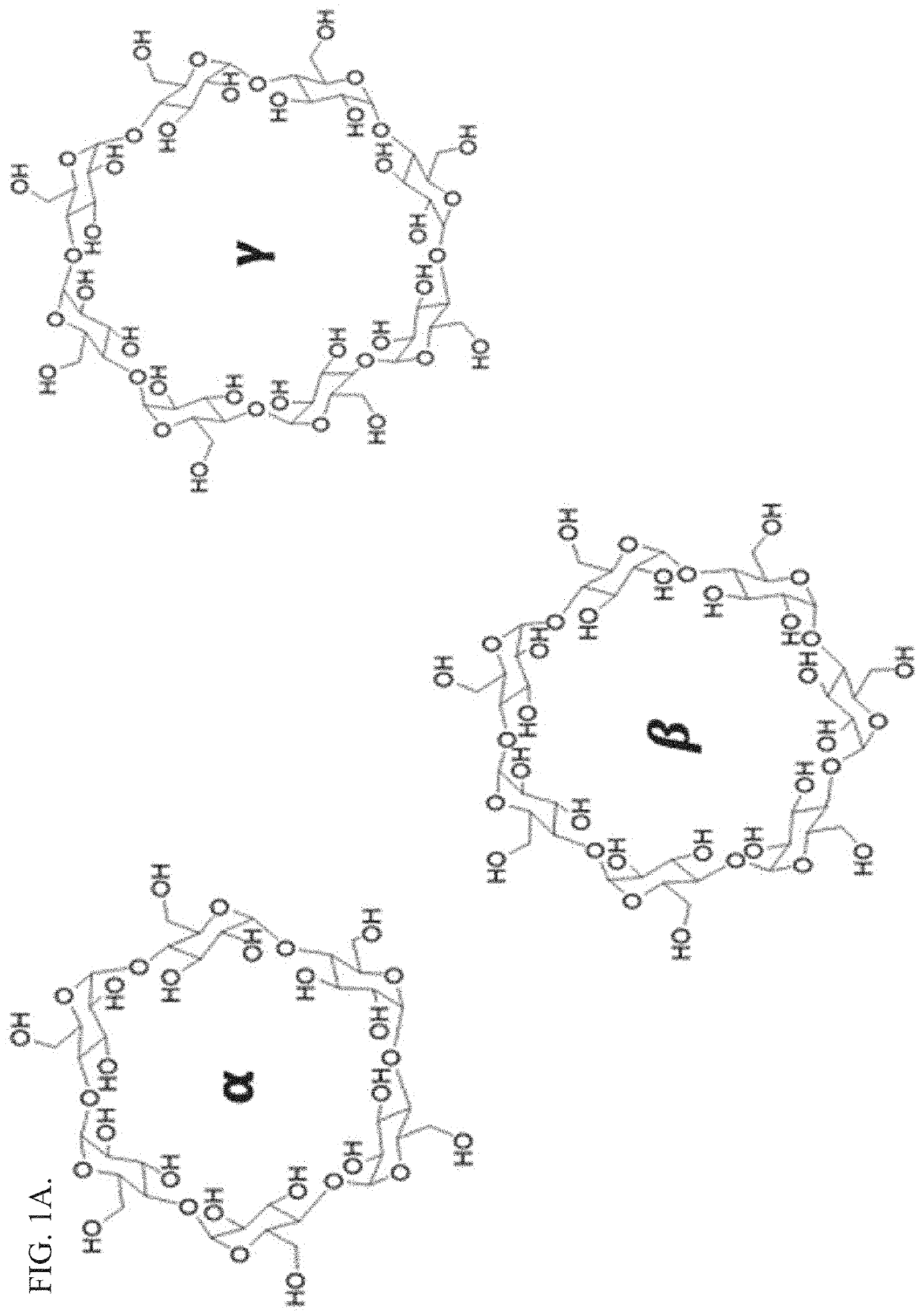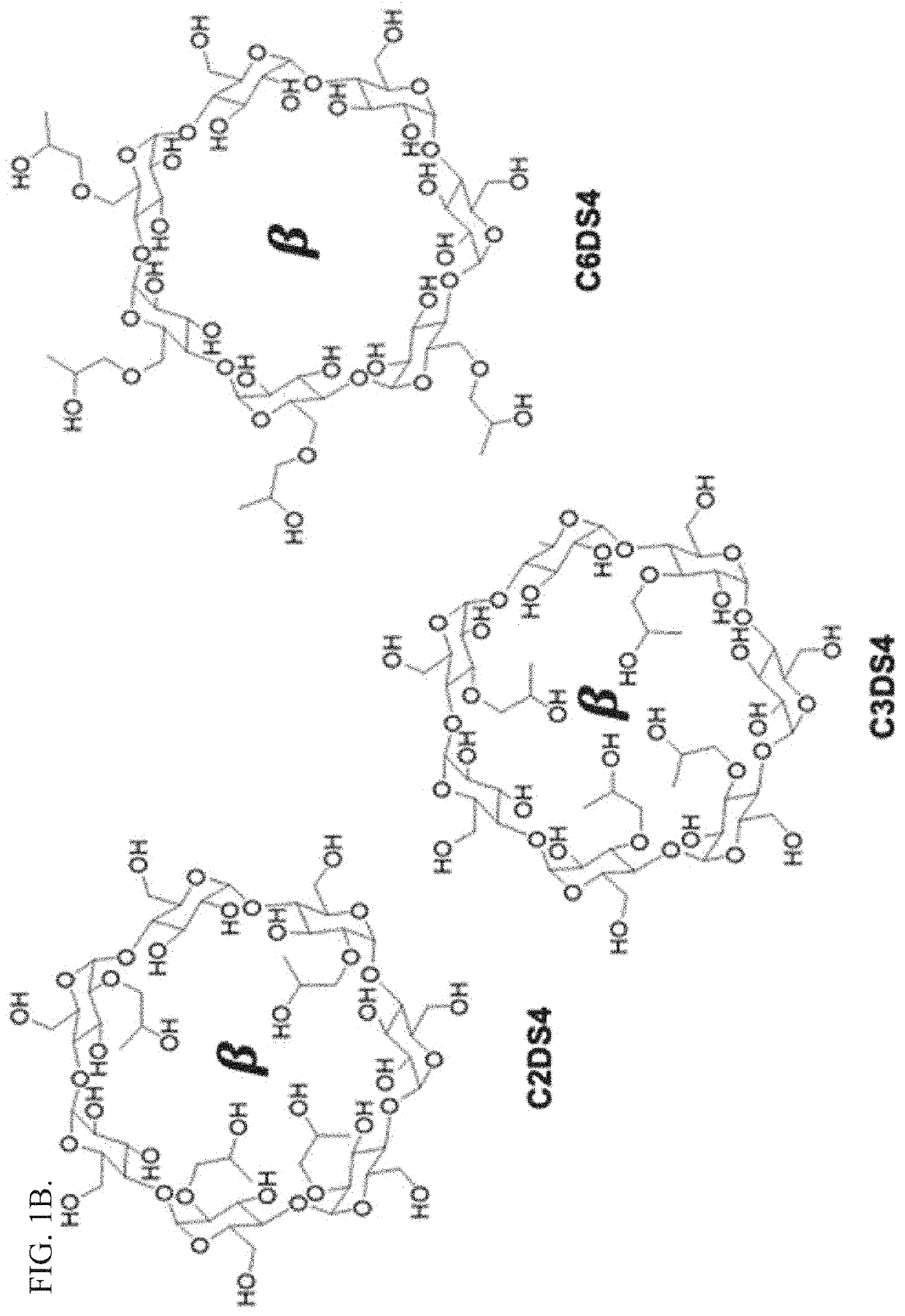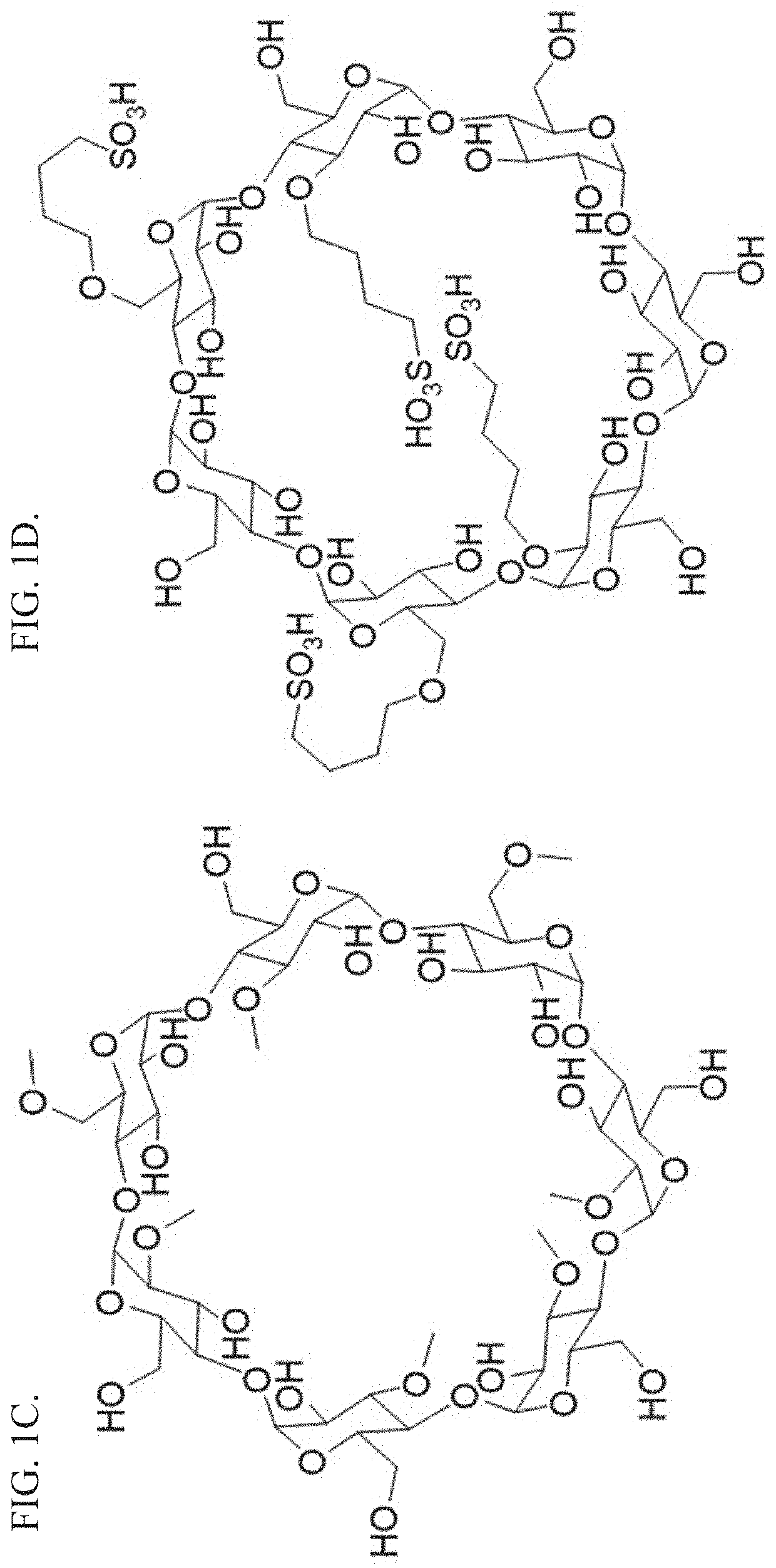Cyclodextrin dimers and uses thereof
a technology of cyclodextrin and dimers, which is applied in the field of cyclodextrin dimers, can solve the problems of no useful purpose, no useful purpose, and ineffective formation of cyclodextrin, and achieve the effects of reducing or avoiding potentially deleterious or toxic effects, reducing the specificity of 7kc, and improving binding properties
- Summary
- Abstract
- Description
- Claims
- Application Information
AI Technical Summary
Benefits of technology
Problems solved by technology
Method used
Image
Examples
example 1
Previous MD Simulations of βCDs and βCD Dimers
[0425]Previously, we have conducted various simulations of monomeric (FIGS. 3E-F) and dimerized (FIGS. 4A-H) βCD molecules complexing 7KC and cholesterol. After these studies conclusively showed that dimerization significantly improves complexation with these ligands, as supported by wet-lab and NMR data shown in FIGS. 5-6, we have extended these types of simulations to include other types of dimers. Computational analysis before chemical synthesis and wet lab studies allows us to test these molecules in theory before investing in physically synthesizing and testing them. A brief summary of previous studies follows:
[0426]Compared to monomers (FIGS. 3E-3F), our novel, butyl-linked DS5 hydroxypropyl β-CD dimer (FIG. 4A) was significantly better at forming a stable complex with 7KC and cholesterol in the GROMOS forcefield. The contrast between the plots of these trajectories and those for monomeric HPβCD (DS 5) and native βCD provide clear ...
example 2
MD Simulations of C6 Butyl-Substituted DS6 Triazole-Linked βCD Dimers Complexes with Sterols
[0431]FIG. 11A shows trajectory results from MD simulations of a C6 butyl-substituted DS6 βCD dimer independently complexing with 7KC and cholesterol in both up and down orientations. The top chart displays the distance between the center of mass between the ring of O4 atoms of one of the CD monomers of the dimer and the center of mass of the sterol over a period of 100 ns. The middle chart displays the angle formed between the major axis of the sterol and an axis perpendicular to the ring of O4 atoms (as displayed in FIG. 3C) over a period of 100 ns. The bottom chart displays the interaction energy between the CD dimer and the sterol (i.e. the host and guest, respectively, in their host-guest complexing) over a period of 100 ns. The sterols and their orientations are represented by the following colors: 7KC-up (red), 7KC-down (blue), cholesterol-up (black) and cholesterol-down (orange).
[0432...
example 3
MD Simulations of C6 2-hydroxypropyl DS6 Triazole-Linked βCD Dimers Complexes with Sterols
[0433]FIG. 11B shows trajectory results from MD simulations of a C6 2-hydroxypropyl DS6 βCD dimer independently complexing with 7KC and cholesterol in both up and down orientations. The top chart displays the distance between the center of mass between the ring of O4 atoms of one of the CD monomers of the dimer and the center of mass of the sterol over a period of 100 ns. The middle chart displays the angle formed between the major axis of the sterol and an axis perpendicular to the ring of O4 atoms (as displayed in FIG. 3C) over a period of 100 ns. The bottom chart displays the interaction energy between the CD dimer and the sterol (i.e. the host and guest, respectively, in their host-guest complexing) over a period of 100 ns.
[0434]The data indicate that the dimer forms comparatively stable host-guest interactions with both 7KC and cholesterol regardless of an up or down orientation as there i...
PUM
 Login to View More
Login to View More Abstract
Description
Claims
Application Information
 Login to View More
Login to View More - R&D
- Intellectual Property
- Life Sciences
- Materials
- Tech Scout
- Unparalleled Data Quality
- Higher Quality Content
- 60% Fewer Hallucinations
Browse by: Latest US Patents, China's latest patents, Technical Efficacy Thesaurus, Application Domain, Technology Topic, Popular Technical Reports.
© 2025 PatSnap. All rights reserved.Legal|Privacy policy|Modern Slavery Act Transparency Statement|Sitemap|About US| Contact US: help@patsnap.com



